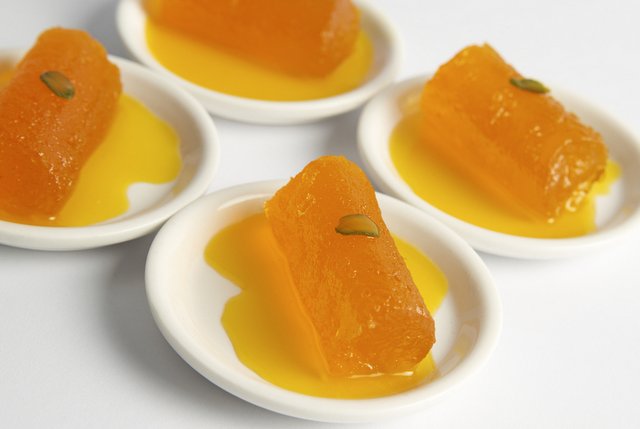The city of Agra is famous for the ‘Taj Mahal‘ a historical monument counted among the seven wonders of the world. Apart from this, another thing with which the identity of this city is associated is the famous Agra Petha. Yes, you heard it right. Although this sweet dish is made in many areas of our country, its essence here is unique. When I got a chance to participate in a Travel Writer’s conference in Agra, I decided to see how the Petha is made, under any circumstances.

Agra Petha has been my favorite dessert since childhood. Whether it is the greeting of the guests or the desire to eat something sweet after the meal, it fits everywhere. Whenever my father used to visit Agra, he brought this delicious dessert for me.
I had the privilege of representing the IndiTales at the heritage walk organized by the Tourism Guild of Agra. When our guide Gaurav Ji was referring to us about the ancient streets of the city, this traditional sweet dish was also mentioned. I urged him whether we can witness this dessert being made. Along with me, other people also showed interest in it.
History of Agra Petha
The history of this traditional local sweet dish will take you back to the Mughal period. It is a 350-year-old dessert. During the Mughal period, there used to be a large number of soldiers and personnel stationed at Agra. Human beings have a tendency to eat something sweet after meals. So, what sweet can be made for them which will last a longer shelf-life, if made in huge amounts at one time? More importantly, will it be too expensive? Petha became the answer to all these questions.
Legend has it that 22,000 artisans worked daily on the construction Taj Mahal under Shah Jahan. They got upset after eating the same kind of food every day. So to add something new to their food, the chef prepared this dessert. About 500 cooks were appointed who started making this sweet dish. Nur Jahan too became fond of its taste, due to which it was included in the royal kitchen.
Petha or Pumpkin is one of the indigenous vegetables of India, so it is possible that Agra Petha existed even before Shah Jahan made it commonplace.
Process
The fruit which is used to make the dish is known by various names such as – Kushmand, Bhatua, White Pumpkin or Ash Gourd and Kumhda, etc.

Firstly, this fruit is cut and its peel is removed. Then it is kneaded (i.e. made small holes into it). The main purpose of kneading is to make sure molasses reach inside. Machines are used for kneading in big factories. Then it is mixed with lime water and washed so that it becomes clean and hard. After this, the process of boiling is done.
Now it is cut into small pieces – preferably of square shape.

On the other hand, a sugar solution is boiled, which is called molasses. When the sugar dissolves completely, chopped pieces of fruit are added to it.

It is boiled for 10 to 15 minutes so molasses reach deep inside these pieces. After this, it is kept to cool down.

So after some time, the delicious sweet dish is ready. Don’t you want to taste it? I know, your mouth must have been filled with water too.
Varieties of Flavors

Nowadays there is a variety of flavored versions of this sweet dish in the market like Angoori (Grapes), Cardamom, Chocolate, Gulab Laddu, Doda Barfi, Paan, Saffron, etc. There is a different methods of making all these. Just like if the cardamom flavored dish is to be made, cardamom powder is added to the molasses. Nowadays, sugar-free versions are also available for diabetic patients.
Do read: The making of Mathura Peda at Brijwasi Sweets
Where to buy Agra Petha in Agra?
These sweet dish shops can be found everywhere in the city of Agra. There are about 5000 retailers according to the figures. But some shops are quite popular and authentic as well. The most popular of these is Panchi Petha. Following is short information about some Petha Stores.

Panchi Petha
The oldest shop in Agra, started in 1926 AD by Honorable Late Panchal Lal Goyal (Panchhi Lal Ji), in a small setup called “Panchi Petha Bhandar”. Today they have 6 shops in the city. They are located at Noori Darwaza, Dholpur House, Sadar, East Darwaza Taj Mahal, Western Darwaza Taj Mahal, and Chalisa Marg. The shop located near Noori Darwaza is the oldest and first shop for this sweet dish.
Earlier they used to make only 6 types of Petha. Gradually they experimented and today they make 19 types of the dish. This sweet dish remains edible for 2 weeks. Packaged ones are edible for as long as a month.
Note – In Agra, you will see shops called Panchi Petha everywhere, but keep in mind that their actual shops are only 6. To find out which is the right shop, every picture of them has a picture of “Late Panchhi Lal Ji”. Therefore, do not be deceived by the name.
Gopaldas Pethe Wale
This name is also a well-known name in the city. It is also an old shop, located at Fatehabad Road, Tajganj. They also have many varieties of this dish. While strolling in the city, I passed through this shop once. The decoration of the shop was, of course, superb, but I can not be sure of the taste.
Munnalal Pethe
At the behest of our guide Gaurav Ji, we stopped at this shop. This shop located in the Rawat Pada area is also very famous. It is crowded with people most of the time. After speaking to the owner, and waiting for a while, we expressed our desire to see the making of the dish. At first, he hesitated. He said that there will be a hot environment inside, and cleanliness will not be too much. But anyway we agreed to all his terms.
A street passes by the side of his shop, at the end of which there is a room on the right side where the dish is made. And we first saw the dish being made at this place.
Do read: Celebrating Holi Festival in Mathura Vrindavan
My Experience
All my attention was just on one thing when I will see the making of Petha. When Munnalal Shop was ready to show me the process, I was thankful. When I reached the place, the manufacturing of the dish was in progress.
I tried to talk to one of them and requested him to show me the process. He showed me the method sequentially and also showed the people working on the process. One person was busy peeling and cutting the fruit, while the other was carrying out the process of boiling it. Finally, a person was mixing it with molasses.
Read More – Making of Dharwad Peda
I was given a freshly made piece, which I accepted, with a playful laugh. In fact, I have tasted it so many times, but this time it was something different. It sweetened my whole mouth, it might have been the magic of its freshness.
The rest of the comrades with us came back and shopped for this sweet dish to carry back home. I also bought a box of Agra Petha. This way, I ended one of my eagerness – seeing the way of making one of my favorite sweets.
This post is Written by Abhishek in Hindi and translated to English by Vipin.
















Agra Petha is wonderful sweet I like most thanks for sharing
Looking so delicious, I have visited Agra twice but never tasted this tasty petha. It looks so yummy
Ankit – In which case you have not really visited Agra 🙂
Amazing Post – Very well written. I love food but because of overweight, I can’t eat this.
Here the idiom proved right that ‘Old is gold’.The Agra petha which is famous all over the world .It is prepared in many areas of the country and is made since mughal time .I never visited the place Tajmahal but i had tasted the petha which is one of the best sweet dish i know . I recommend registered society of Agra (u p) to get listed it to geographical indications tag , so that it can be sold only in the name as ‘ Agra ka petha’
Yes, it’s truly so delicious & famous dish Agra Petha so yummy & testy, Thankfulness for sharing this post 🙂
hey your blog is nice and yes Agra is very famous for petha and it is so tasty whenever I visit Agra I will eat petha.